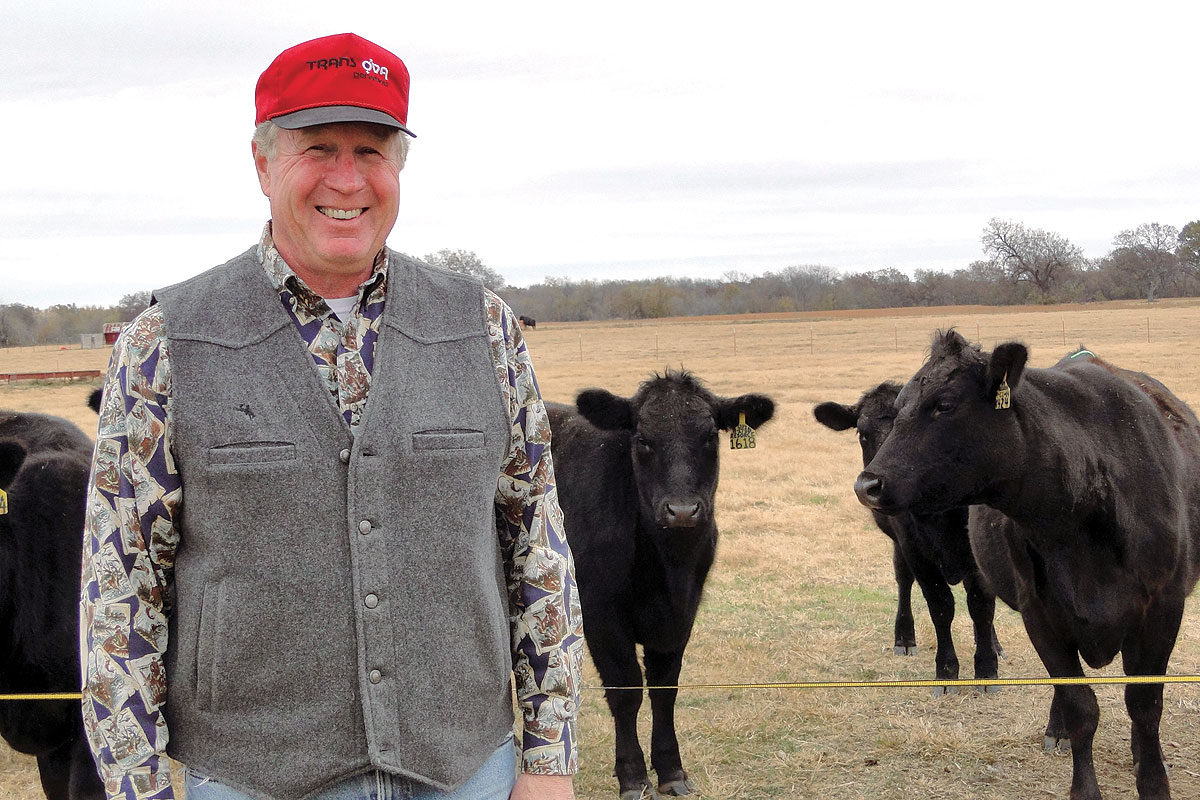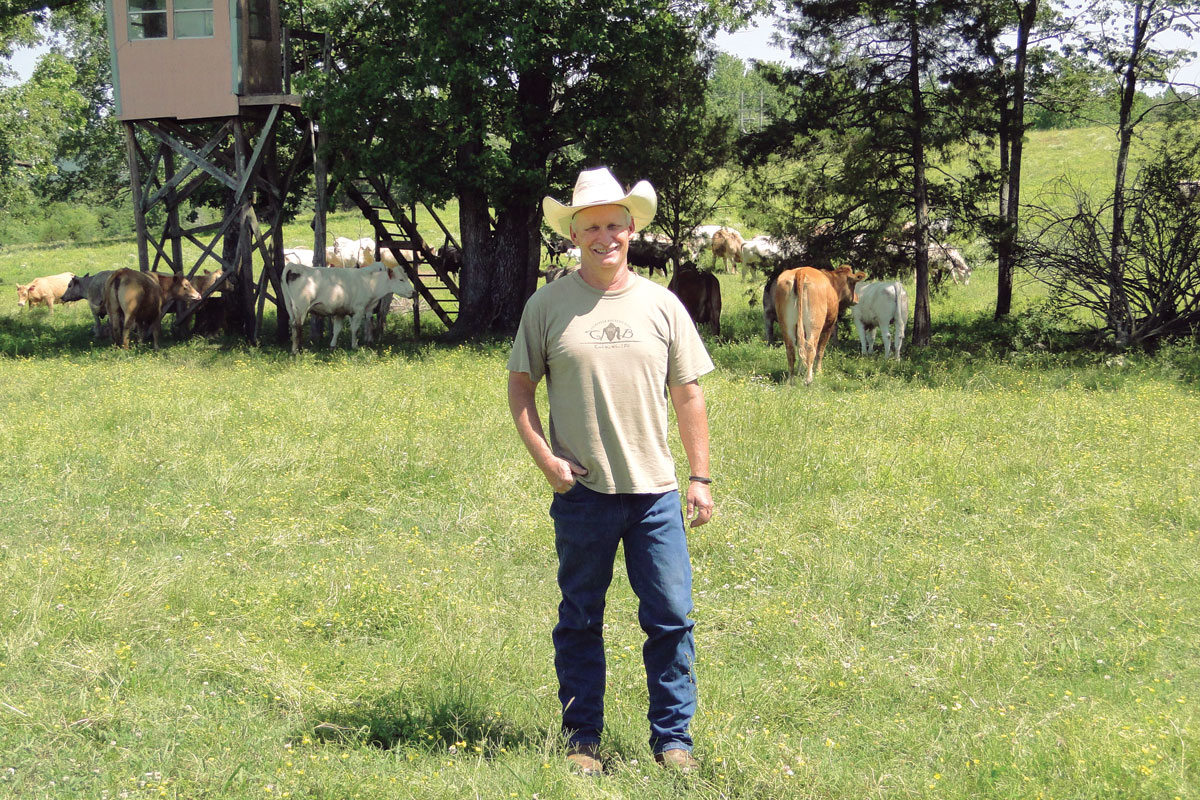
John and Deanna Christ may have fewer acres, but they are able to keep their herd the same size
Some people are gifted with the ability to see the trees and the forest simultaneously and then make adjustments to the system for optimum productivity. John Christ of Bixby, Okla., is one of these people.
John and Deanna Christ work far more than full-time hours at Christ Construction in Tulsa, Okla. They build custom residential homes and small commercial buildings, as well as handling remodels. They are general contractors with John in charge of the exterior and Deanna in charge of the interior and the books.
John and Deanna had lived in Tahlequah, Okla., on a 500-acre farm where John raised registered black Angus breeding stock with 50 mommas as a base. The drive to Tulsa eventually proved too time-consuming, so the couple sold that farm in 2009 and bought a 50-acre spread in Bixby, adjacent to Tulsa. The significant point is that John is raising almost the same number of cattle as profitably and perhaps even more because of continual genetic and systemic improvements, but on one-fifth of the land.
Part of the new equation for his Bixby ranch was selection for flatter and more productive land. Like much of the area, alfalfa was raised there at one time. Understanding the nutritional value of alfalfa because of his dairy experience, John this year added alfalfa seed to his annual fall broadcast program of ryegrass and clover to support his Bermuda, ryegrass, crabgrass and Ladino clover pastures.
“I am a grass farmer, and legumes are important,” John said. “The advantage to alfalfa is that it has a larger nodule and a deeper underground root system than clover making it more heat resistant. Adding alfalfa will improve the nutritional value of my pastures. We have forgotten nature had a recipe so the land was originally full of different plants that peaked at different times making food available year-round for animals.”
Keeping the recipe concept in mind, John added honeybee hives to his system in order to take advantage of the natural relationship among plants, cattle and bees. He soon observed his clover flourishing rather than merely surviving. Additional benefits from his beehive program are being able to sell honey and eliminating most of his pesticide overhead. The Bixby pastures are well developed so he only needs to spray for Carolina horsenettle every three years and pulls weeds during his daily walk to check land and cattle.
John uses rotational grazing with his pasture divided into six 3 to 13 acre paddocks on which he supports four registered black Angus herds: fall calvers, spring calvers, fall and spring heifers and bulls. Since John has insufficient land to raise his own hay, he buys locally.
“I buy my hay locally because the colostrum a cow produces comes from what she eats, and if the source is local grasses, she provides her calf with the exact protection it needs for where it’s being raised,” John said.
John’s intended market is the commercial breeder who wants 15 to 30 more pounds out of his calves in order to receive a larger sale check. The key is, of course, genetics. John has been helping with AI since he raised his first tail at the age of 4 because his father was on the cutting edge of that new technology in the 1950s. He remembers chasing semen that was kept on dry ice and dropped from an airplane with three tiny parachutes. He chased the drifting package across the fields so he could bring the small container back to his father. He also has fond memories of purchasing his first heifer with money he earned by mowing yards and working for his grandfather. John emptied his piggy bank and bought a registered Holstein, with which he won state champion.
John performs an AI and ET program so he can combine the old genetics from bulls like Emulator, Traveler and Rito who bring hardiness, good legs and feet, and a gentle temperament with the new genetics which provides higher meat quality in greater amounts. John’s genetic combination preference circles back to the local grasses and hay. Because of the old genetics, his seed stock does not require premium hay, grass or grain. His cattle thrive on what commercial producers use which is an important factor in meeting the needs of his clientele.
Facilities are another part of John’s systemic approach. When he first bought the Bixby land, John piped water to the fence lines of his paddocks. The farm already had a good working system for someone who needed to work by himself. His work area has a good squeeze chute built in a tight circle with the cattle entering and exiting at the same spot.
“I have very little time I can devote to the cattle, and John’s Australian Shepherd Bingo saved our marriage because John can do everything by himself,” Deanna said with a laugh. Ten minutes later, when Deanna was off to the airport to pick up a family member, John said exactly the same thing.
John and Deanna met while in college in Bismarck, N.D., married and have six children and eight grandchildren. Both believe farming provides invaluable educational opportunities in terms of knowledge and experiment thereby eliminating fear of animals and misunderstandings of how agriculture works. As in the construction business, John takes care of the exterior education and Deanna the interior by teaching cooking and canning.
“John and I may have insanely busy lives but saving time for family is always a priority,” Deanna said.






